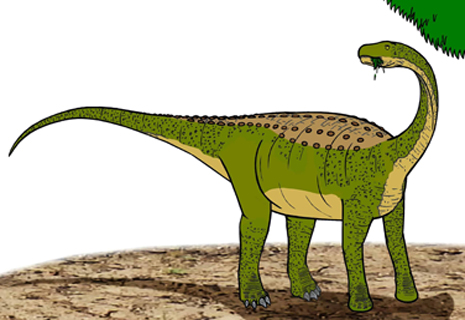
Magyarosaurus Dinosaur meaning "Hungarian lizard," is a fascinating dinosaur that inhabited the Earth during the Late Cretaceous period, approximately 85 to 70 million years ago. It belonged to the family Titanosauridae and is renowned for its small size and unique characteristics. Unlike many other sauropod dinosaurs, Magyarosaurus was quite diminutive, measuring around 6 meters (20 feet) in length and standing at a height of approximately 2 meters (6.5 feet) at the shoulder.
One of the remarkable features of Magyarosaurus was its unusually short neck. Unlike the long necks of other sauropods, Magyarosaurus had a neck comprising only 10 vertebrae, making it one of the shortest necks among known dinosaurs. This adaptation likely allowed it to forage for food in low-growing vegetation, possibly in areas with dense forests or swampy environments. The skull of Magyarosaurus was small and narrow, equipped with sharp, peg-like teeth that were ideal for cropping vegetation. Its teeth were continuously replaced throughout its lifetime, enabling it to maintain a constant supply of functional teeth for efficient feeding.
Magyarosaurus Facts :
| Name: | Magyarosaurus Dinosaurs |
| Size: | 6-7 meters |
| Main Facts: | Magyarosaurus, meaning "Hungarian lizard," is a fascinating dinosaur that inhabited the Earth during the Late Cretaceous period, approximately 85 to 70 million years ago. |
The limbs of Magyarosaurus were relatively stout and ended in hoof-like claws. Its forelimbs were slightly shorter than its hind limbs, suggesting that it may have had a semi-bipedal stance, occasionally rearing up on its hind legs to reach higher vegetation. It likely moved in a slow and deliberate manner, utilizing its strong legs to support its body weight.
Magyarosaurus inhabited the ancient island of Hațeg, which is now part of modern-day Romania. This region was characterized by a unique and isolated ecosystem, resulting in the evolution of dwarfed forms of various dinosaur species, including Magyarosaurus. The limited food resources and limited available habitat on the island likely contributed to the dwarfism observed in these dinosaurs. Despite its small size, Magyarosaurus was a successful herbivore that likely fed on ferns, conifers, and other low-growing vegetation. Its small stature may have also been an adaptation to reduce energy requirements and avoid competition with larger herbivores.